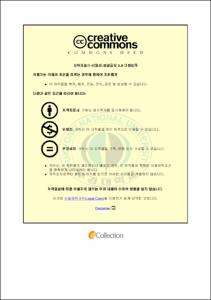Development of Seafood Flavor Using Glucosamine and Other Precursors and Its Application to Teriyaki Sauce
- Abstract
- Seafood is a rich source of protein, vitamin, and minerals. Shells of shrimp and crab use as raw material to produce glucosamine hydrochloride or glucosamine sulfate. The development of seafood flavor by using glucosamine and other precursors was investigated by the reaction of glucosamine itself, glucosamine-reducing sugars and glucosamine-lysine. Three factors affect reaction mechanisms which were applied with variables of reaction time, initial pH, and concentration ratio at 120oC constant reaction temperature in order to investigate the optimum condition of Maillard browning reaction. Glucosamine is an amino sugar. The 0.1 M of glucosamine was dissolved with distilled water 5 ml, heated at 120oC with different reaction times of 1, 2, 3, 4 and 5 hours. The result showed that the browning reaction increased with increasing of heating time. The result also showed that the level of browning was increased when glucosamine concentration was increased. Maillard reaction between glucosamine reducing sugar showed among five kinds of sugar and galactose was the best. The reaction between glucosamine-lysine with different factors of time, initial pH, and concentration ratio showed the level of browning reached optimum condition at 4 hours, initial pH 9 and 1 to 1 concentration ratio. There were 88 volatile compounds detected by dynamic headspace gas chromatography mass spectrometry. Among them, there were 16 compounds which are 6 compounds of furan group and 10 compounds of pyrazine, pyridine, and pyrimidine groups. Responsible surface method between glucosamine-lysine was also designed at the mid-point of 100oC reaction temperature, 3 hours of heating time and pH 7. The optimum browning condition were 120oC reaction temperatures with 4 hours heating time and initial pH 9 by measuring its absorbance at 425 nm. Three kinds of Teriyaki sauce were developed to investigate the volatile flavor compounds. The 85 volatile compounds were detected from that Teriyaki. Teriyaki sauce produced from eel bone had more flavor compounds.
- Issued Date
- 2012
- Awarded Date
- 2012. 2
- Type
- Dissertation
- Publisher
- 부경대학교
- Department
- 대학원 국제수산과학협동과정
- Advisor
- 이양봉
- Table Of Contents
- Table of Contents i
List of Figures iii
List of Tables v
Abstract viii
Introduction 1
1. Seafood 1
2. Glucosamine for seafood flavor 2
3. Maillard reaction 4
4. Teriyaki sauce 7
Materials and Methods 9
1. Materials 9
2. Methods 9
2.1. Non-enzymatic browning reaction 9
2.2. Absorbance measurement 13
2.3. Measurement of dilution factor 13
2.4. Preparation of Maillard reaction 13
2.5. Isolation, separation and identification of headspace volatile compounds 14
2.6. Preparation of Teriyaki sauce 17
3. Response surface method 17
Results and Discussion 23
1. Non-enzymatic browning reaction of glucosamine 23
2. Effect of reducing sugar on browning of Glucosamine 25
3. Model system of glucosamine and amino acid 28
3.1. Effect of reaction time 30
3.2. Effect of concentration ratio of reactants 31
3.3. Effect of reaction pH 36
4. Headspace volatile compounds in glucosamine-lysine model system 37
5. Responsible surface analysis 52
5.1. Responsible surface analysis on absorbance 52
5.2. Responsible surface analysis on Hunter L, a, and b values 57
6. Headspace volatile compounds of Teriyaki sauce 57
Conclusion 70
Acknowledgement 72
References 73
- Degree
- Master
- Appears in Collections:
- 글로벌수산대학원 > 국제수산과학협동과정
- Files in This Item:
-
-
Download
 Development of Seafood Flavor Using Glucosamine and Other Precursors and Its Application to Teriyaki.pdf
기타 데이터 / 2.37 MB / Adobe PDF
Development of Seafood Flavor Using Glucosamine and Other Precursors and Its Application to Teriyaki.pdf
기타 데이터 / 2.37 MB / Adobe PDF
-
Items in Repository are protected by copyright, with all rights reserved, unless otherwise indicated.